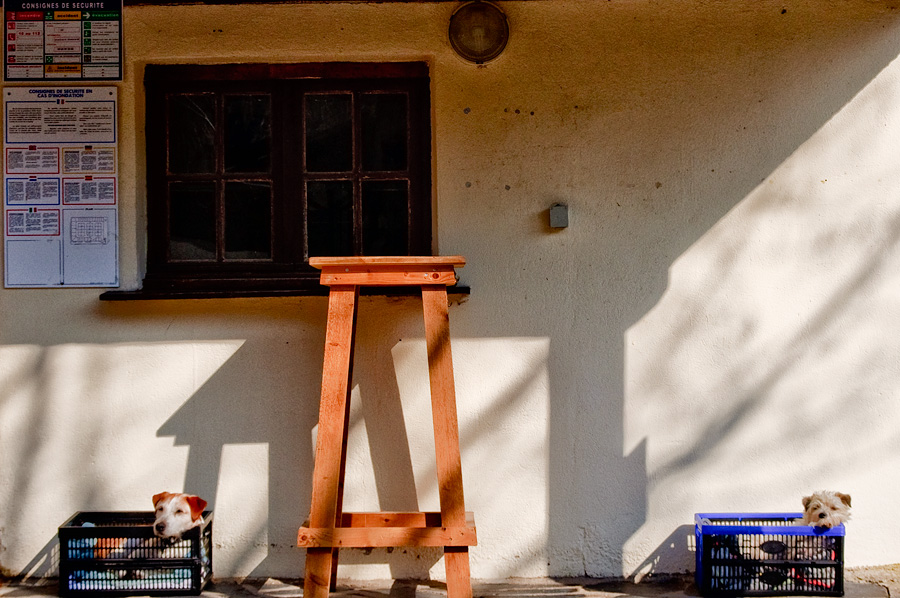Intro to Photography Class
Better known as Reddit Photoclass
20 – Film vs. Digital
Until a couple of years ago, the debate was still raging: between the century old chemical process of film and the brand new digital sensors, which should one choose? Things have now settled, and the vast majority of photographers have made the switch to digital, relegating film to niche uses. There are still many compelling reasons to use film, though, if only for experimentation. We’ll outline here some advantages and drawbacks of each medium.

For digital:
- Immediate feedback. More than anything else, this should be considered the main reason for the success of digital photography. By being able to see the image right away and examine focus and exposure, it is possible to reduce the number of catastrophic mistakes. It also makes experimenting and learning much easier, and this is why digital makes excellent first cameras for anybody.
- It costs no money to take many pictures, encouraging to shoot more, experiment more and get mileage faster. Since the memory card can be reused and shutters are rated for several dozen thousands of uses, the cost of each picture is very close to zero, past the initial investment. As we will see in the film section, some would consider this a drawback.
- Each memory card can contain hundreds, if not thousands of images, whereas film is limited to 36 exposures at most. Film is also impractical to transport in great quantities, being heavy and bulky, slow to switch in the camera, etc.
- Dynamic ISO: the ability to modify ISO on the fly is a huge advantage over the static light response of film and offers a lot more versatility when light changes fast or unexpectedly.
- Cataloging and editing are both much easier with digital files. Even though talented printers could do many things in a darkroom, it often required years of training and expensive equipment. For better or for worse, Photoshop has made all these manipulations accessible to everyone. It is possible to digitize film, but it requires many additional and time consuming steps, as well as a significant investment in scanning equipment.
- Finally, all the development happens in digital nowadays, and all the new features are only available on digital bodies.
For film:
- The drawbacks of no immediate feedback and expensive, limited number of frames are sometimes considered as advantages: less distraction, more focus on images that really matter, forcing the photographer to pay more attention to his craft. For these reasons, a film camera can be a great learning tool to photographers who master the basics but want to push their art further.
- Though the film itself is costly, we have decades worth of old bodies and lenses available at very low prices, since so few people shoot film anymore. Trying film photography for a little while doesn’t have to be a big financial investment.
- There are not very many exotic digital cameras, few manufacturers venture out of the compact – DSLR standards. Film, on the other hand, has all sorts of bizarre and fun cameras : medium format, large format, TLRs, rangefinders, holgas, etc. It can open new venues for experimentation and expressing your personal vision, or just growing as a photographer.
- Though high-end digital has pretty much caught up, film still holds its own in image quality, in particular in terms of resolution and dynamic range (with negatives, slide film having a notoriously bad range).
- The world of the darkroom, though quickly vanishing, is something wonderful. If you shoot black and white, you can fairly easily do your own printing, something which many people love and a very different way of relating, on an almost physical level, to your pictures.
- Many old film bodies are refreshingly simple, with no gimmicks and very few controls – the Leica M and Nikon FM are perfect examples of this. Not only will you not depend on a battery, but you could learn a discipline of image making which has the potential of making you a much better photographer. In particular, it drives home the point that a camera is just a tool, something fancy DSLR makers want you to forget.

In conclusion, there is definite answer. Little doubt remains that outside of niche uses, digital is more practical, cheaper and more useful than film. But using a film camera for a period of time could be a great learning tool. As an example, see the Leica year proposed by The Online Photographer a while back.

wx7671